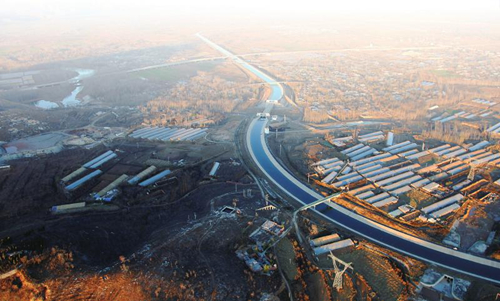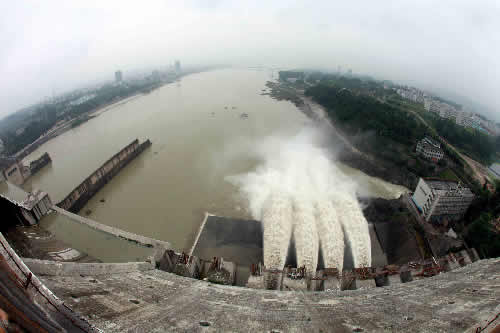 |
|
[Photo from nsbd.gov.cn] |
The South-to-North Water Diversion Project, the world's largest of its kind, runs across the watershed of China's four major rivers–the Yangtze River, Huaihe River, Yellow River and Haihe River–with more than 10 provinces (autonomous region, municipalities) involved. Due to the length of the water diversion line and the large cover area, this large-scale water project is very complicated but highly profitable. It includes almost every aspect of water projects, such as the construction of reservoirs, lakes, canals, watercourses, dams, pumping stations, tunnels, aqueducts, culverts, inverted siphons, pccp pipelines, channels and so on. The project is unprecedented both at home and abroad in terms of its scale and degree of difficulty.
The South-to-North Water Diversion Project is the largest water diversion work in the world. After completion, up to 44.8 billion cubic meters of water will be diverted annually, including 14.8 billion through the Eastern Route, 13 billion through the Middle Route and 17 billion through the Western Route. After the first phases of both the Eastern Route Project and the Middle Route Project are finished, the amount of water to be diverted to the north is expected to be 18.27 billion cubic meters. The water diverted is expected to arrive in Beijing via the Tuancheng Lake Open Channel, an emergency water supply project in the Beijing-Shijiazhuang Section of the Middle Route Project.
 |
| [Photo from xinhuanet.com] |
The South-to-North Water Diversion Project stretches the longest water diversion distance in the world, with the main canals of the Eastern, Middle and Western routes totaling 4,350 km. The first phase of the Eastern Route Project and the Middle Route Project under construction is 5,599 km long, consisting of 2,899-kilometer main canals and 2,700-kilometer first-tier supporting branch canals through six provinces (cities) along the two lines.
The South-to-North Water Diversion Project aims to alleviate acute water shortages in North China, especially regions along the Yellow River, Huaihe River and Haihe River, covering a vast area of 1.45 million square kilometers, which approximately accounts for 15 percent of China's land territory (9.6 million square kilometers). If an investment of 50,000 yuan ($8,160) to 100,000 yuan brings one job opportunity, more than 180,000 jobs can be created by the first phase of the Eastern Route Project and Middle Route Project under construction every year. Once the completed parts come into use, the improved water supply conditions in the north can stimulate economic and social development and thus create more jobs. In addition, this project is expected to bring huge benefits in various aspects, including agricultural water supply, flood control, shipping, waterlogging drainage and eco-environment. In the long run, the average direct economic result of the South-to-North Water Diversion Project can reach 55.3 billion yuan per year if taking the price level in 2000 as the standard.